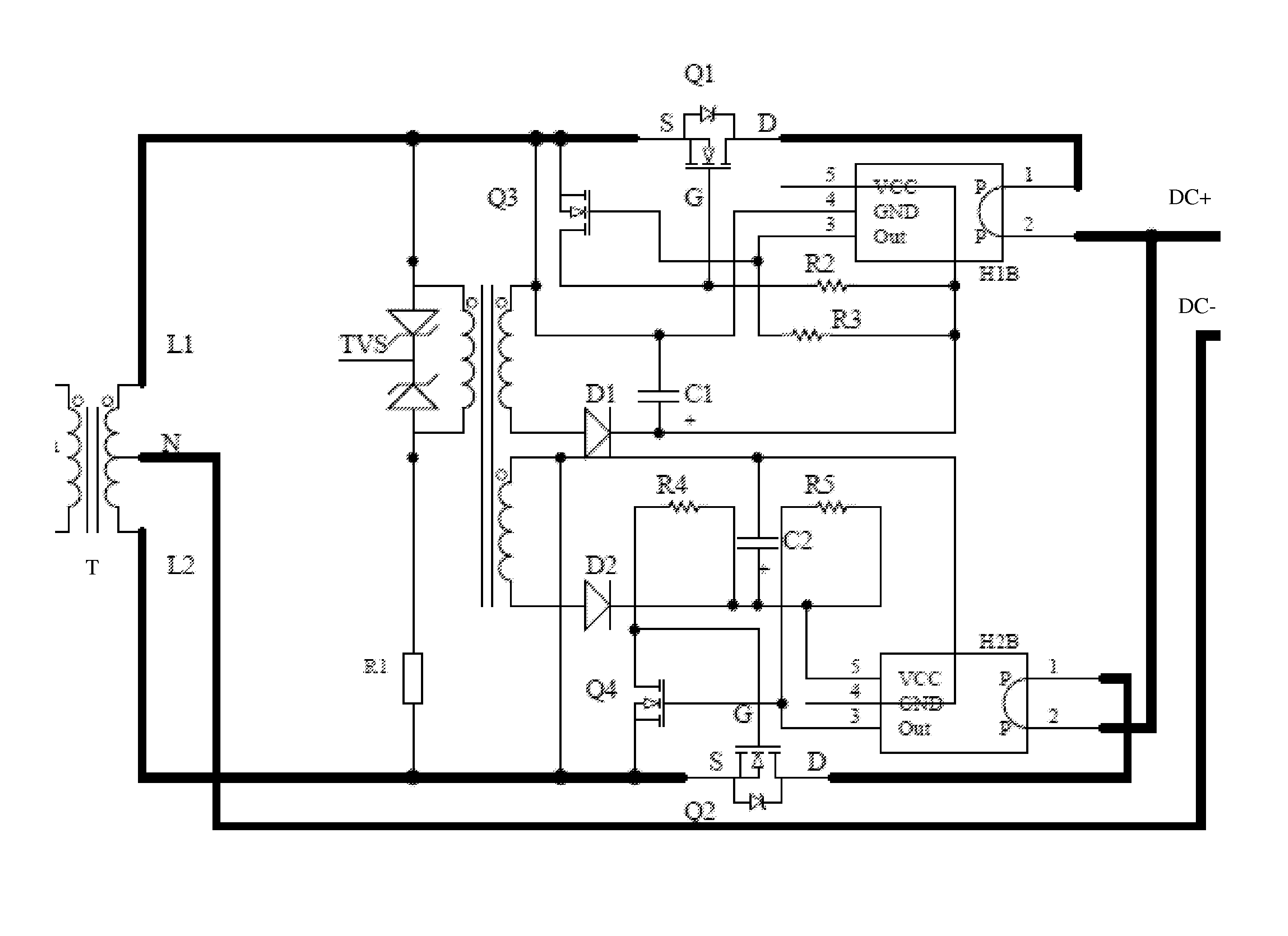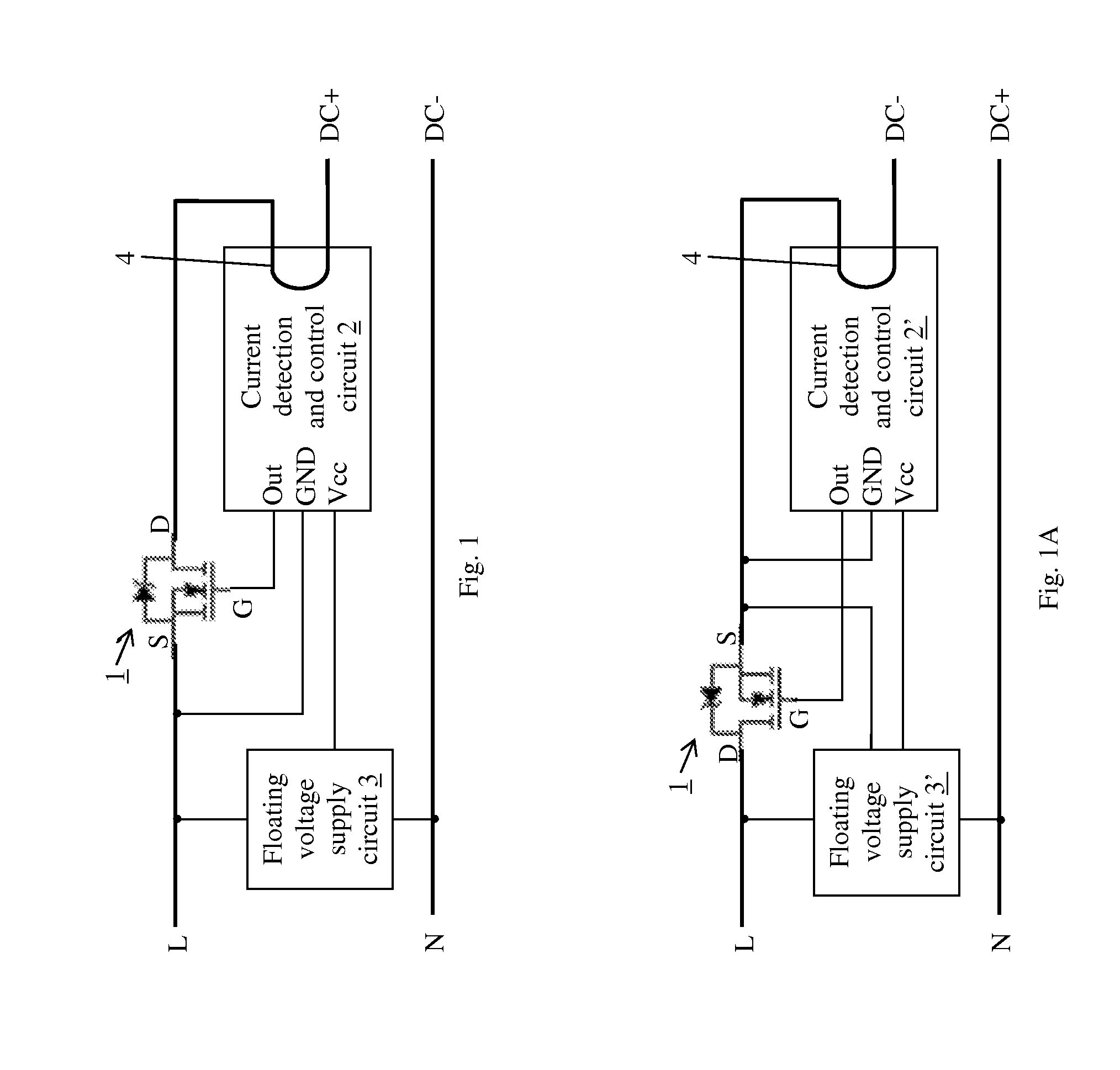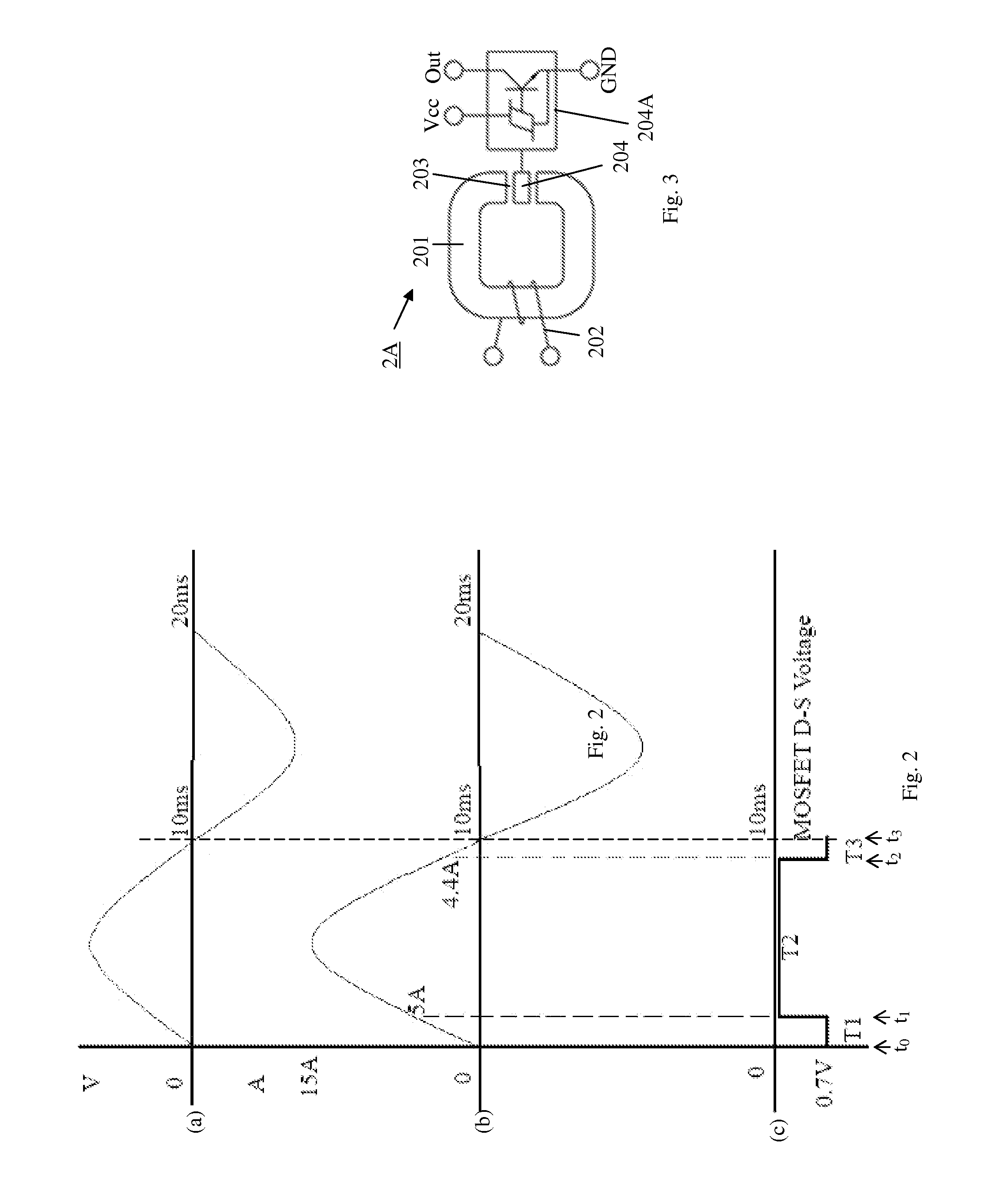Active switching rectifier employing mosfet and current-based control using a hall-effect switch
a technology of hall-effect switch and active switching rectifier, which is applied in the direction of voltage/current isolation, magnetic field measurement using galvano-magnetic devices, instruments, etc., can solve the problems of reducing the reliability and efficiency of equipment, power loss can be significant, and the control circuit of mosfet is complex
- Summary
- Abstract
- Description
- Claims
- Application Information
AI Technical Summary
Benefits of technology
Problems solved by technology
Method used
Image
Examples
first embodiment
[0031]FIG. 1 is a schematic diagram showing an active switching rectifier circuit according to the present invention, in a single phase half wave configuration. The active switching rectifier circuit includes a MOSFET 1, which is preferably an N-channel power MOSFET, a current detection and control circuit 2, and a voltage supply circuit 3. The AC input for this circuit is a single phase AC source having a phase line L and neutral line N. The source electrode S of the MOSFET 1 is coupled to the input phase line L and its drain electrode D is coupled to the positive DC output DC+. The AC neutral line N acts as the negative DC output DC−. The DC load is connected between DC+ and DC−. The current that passes through the MOSFET 1 flows through an input conductor 202 of the current detection and control circuit 2. The current detection and control circuit 2 does not have any electrical element on the current path except for the conductor 202 itself, which has a negligible resistance. The...
second embodiment
[0065]FIG. 5 is a schematic diagram showing an active switching rectifier circuit according to the present invention, in a center-tap, two-phases, full-wave configuration. This circuit has first and second power MOSFETs Q1 and Q2 respectively connected on the first and second phase lines L1 and L2 of the AC power source, corresponding first current detection and control circuit (H1B, Q3, R2, R3) and second current detection and control circuit (H2B, Q4, R4, R5) for controlling the first and second MOSFETs, and a floating voltage pump which separately supplies voltages to the first and second current detection and control circuits. The current detection and control circuits are similar to the current detection and control circuit 20A of FIG. 4 (e.g. components H1B and H2B are similar to H1B in FIG. 4) but have their grounds respectively connected to the first and second phase lines L1 and L2.
[0066]The floating voltage pump in FIG. 5 includes a center tap dual output transformer T, tr...
third embodiment
[0068]FIG. 6 is a schematic diagram showing an active switching rectifier circuit according to the present invention, in a single-phase, full-bridge configuration. This circuit has first through fourth power MOSFETs Q1 to Q4, first current detection and control circuit (H1B, Q5, R1, R2) and second current detection and control circuit (H2B, Q6, R3, R4) for controlling the four MOSFETs, and a floating voltage pump (dual output transformer T, D1, C1, D2 and C2) which separately supplies the first and second current detection and control circuits.
[0069]The four MOSFETs form a full bridge: Q1 and Q4 conduct during the positive half wave of the AC source to output the voltage at the positive DC output DC+; Q2 and Q4 conduct during the negative half wave of the AC source to output the voltage at DC+.
[0070]Each current detection and control circuit is similar to the current detection and control circuit 20A of FIG. 4 (e.g. components H1B and H2B are similar to H1B in FIG. 4) but have their...
PUM
 Login to View More
Login to View More Abstract
Description
Claims
Application Information
 Login to View More
Login to View More - R&D
- Intellectual Property
- Life Sciences
- Materials
- Tech Scout
- Unparalleled Data Quality
- Higher Quality Content
- 60% Fewer Hallucinations
Browse by: Latest US Patents, China's latest patents, Technical Efficacy Thesaurus, Application Domain, Technology Topic, Popular Technical Reports.
© 2025 PatSnap. All rights reserved.Legal|Privacy policy|Modern Slavery Act Transparency Statement|Sitemap|About US| Contact US: help@patsnap.com



